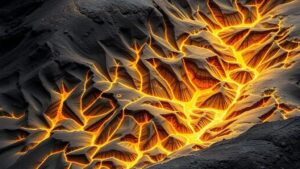Evaluating Erosion Patterns for Gold Concentration in Gravel Bars
Evaluating Erosion Patterns for Gold Concentration in Gravel Bars
The study of erosion patterns in river systems has significant implications for understanding gold deposition in gravel bars. Golds unique physical and chemical properties, along with its high density, dictate how it behaves in flowing water. This article explores the methods for assessing erosion patterns, their effects on gold concentration, and the relevance of these factors in gold prospecting.
Understanding Erosion Patterns
Erosion patterns refer to the systematic removal of soil and rock from one location to another, typically caused by water flow. In riverine systems, the velocity and volume of water can significantly influence these patterns, resulting in the formation of features such as gravel bars. Evaluating these patterns involves identifying zones of high and low energy within the water flow.
- High-Energy Zones: Areas with increased flow velocity typically lead to more erosion. In these zones, lighter sediment is transported downstream, while heavier materials such as gold may settle.
- Low-Energy Zones: On the other hand, areas where the flow rate decreases allow for sediment and heavier particles to deposit. Gravel bars often form in these regions, making them prime locations for gold concentration.
Gold Deposition Mechanisms
Gold deposition is primarily influenced by hydrodynamic factors. As water flows over a gravel bar, gold particles are subjected to forces determined by their size, shape, and density. The process can be described through two primary mechanisms: gravitational settling and hydraulic sorting.
- Gravitational Settling: Gold particles, being denser than most sediments, tend to settle quickly in low-energy environments.
- Hydraulic Sorting: The varying flow rates can lead to the separation of materials based on size, where finer sediments are carried away while coarser ones, including gold, remain trapped.
Field Methods for Evaluating Erosion Patterns
There are several field techniques employed to evaluate erosion patterns and assess the potential of gravel bars for gold concentration. e methods include:
- Topographic Surveys: Using tools such as GPS and total stations, surveyors can measure changes in elevation and sediment distribution over time.
- Soil Sampling: Collecting
Educational Resources
Official Resources
USGS Mineral Resources ProgramOfficial geological survey resources and mapsBLM Mining ClaimsFederal regulations and claim information

